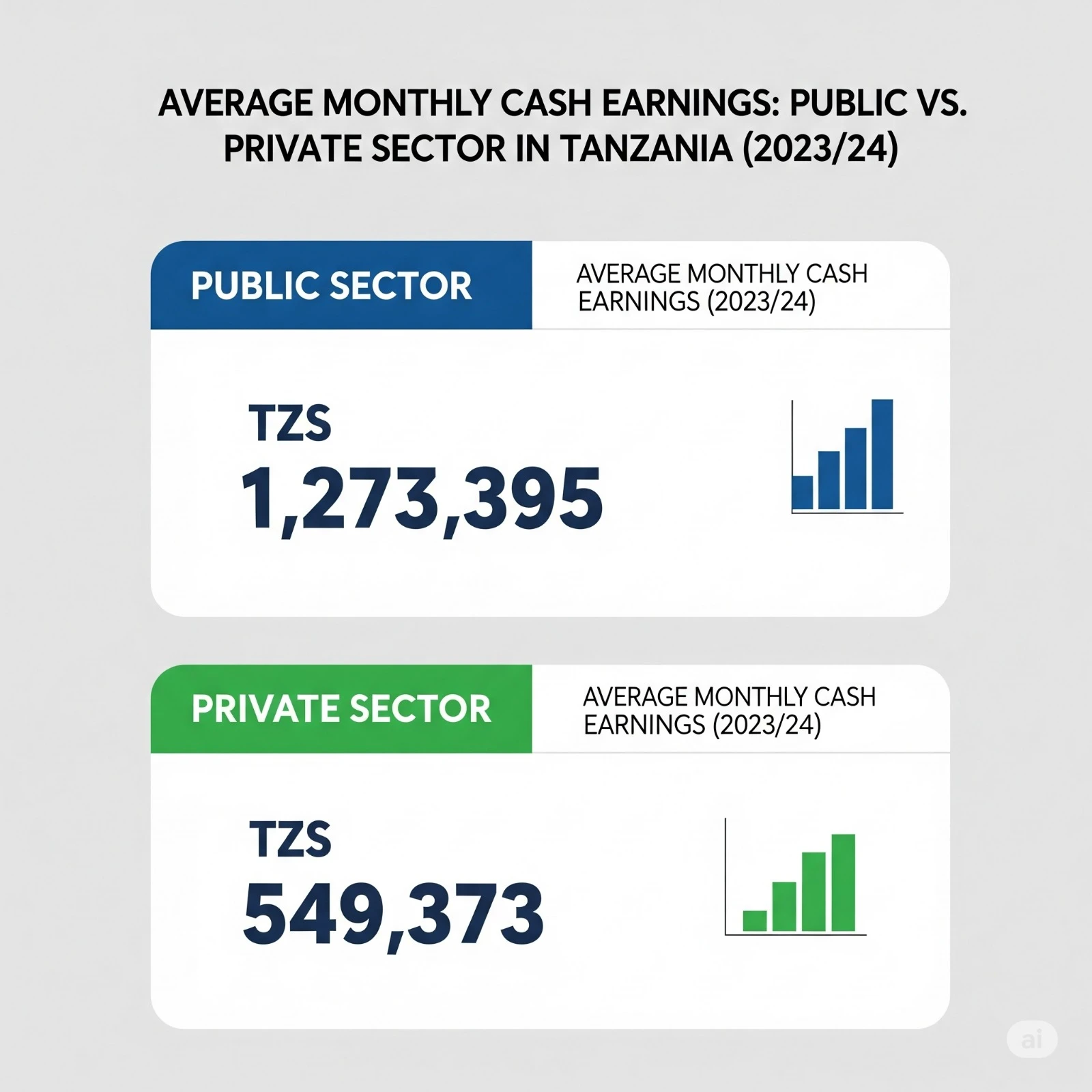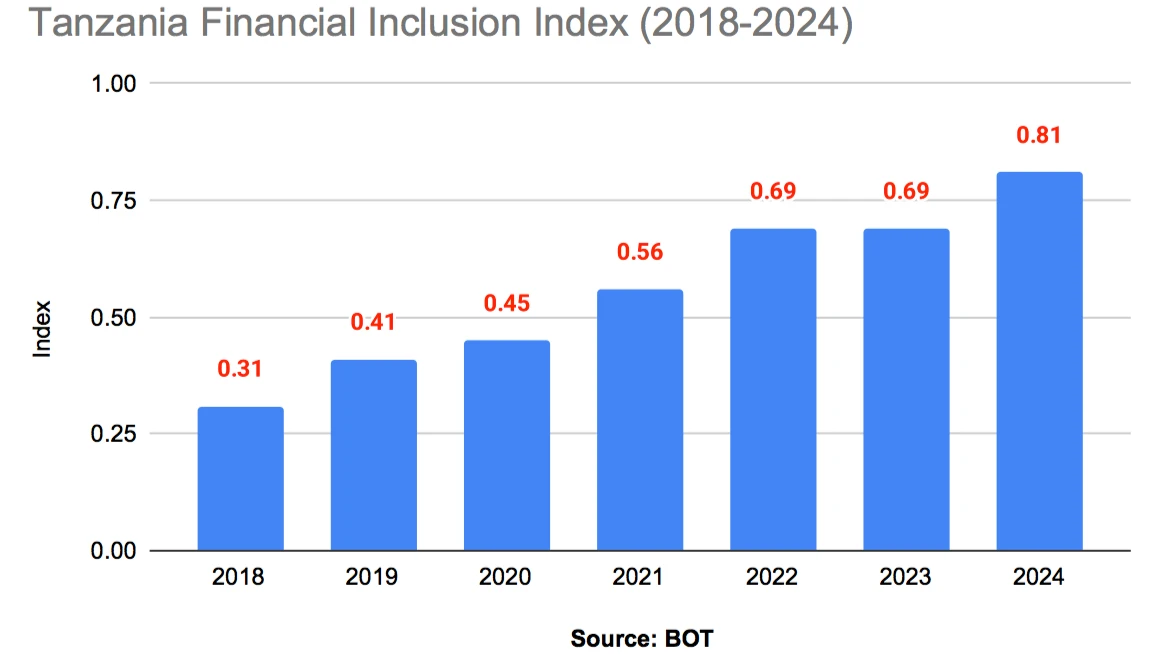'Public sector pays lots more than applies in private sector'

Employees in public sector are earning twice as much as those employed in the private sector, the latest analytical report of 2023/2024 Employment and Earnings Survey (EES) has shown.
Results of the report published last month by the National Bureau of Statistics (NBS) and the Office of Government Statistician of Zanzibar (OGS) indicate that, overall monthly average cash earnings for employees in formal sector in the United Republic of Tanzania (URT) is 609,354/-.
Monthly average cash earnings are higher for employees in the public sector than in private sector, with average monthly cash earnings in public sector (1,273,395/-) being about twice as much as in private sector (549,373/).
The survey based on financial year whereby the recorded data for the total number of employees and their salaries were taken as at 30th June 2024, while other information’s were reported for the whole year (July 2023 to June 2024).
With respect to sex differentials in earnings, results show that there are no pronounced differences between average monthly cash earnings of males and females.
Sector-wise, findings indicate that, average monthly cash earnings for employees in central and local governments; and in parastatal organizations are nearly equal, just above one million shillings. For the private sector, average monthly cash earnings are highest for employees in nonprofit institutions (606,989/-) and lowest for those working in cooperatives (482,527/-).
With respect to industries, findings indicate that, the industry of financial and insurance activities have the largest average monthly cash earnings (1,346,772/-) followed by employees in public administration and defense; and compulsory social security activities (1,228,899/-).
On the other hand, employees in accommodation and food service activities have the lowest average monthly cash earnings in 2023/24.
Analysis indicates that annual wage bill spent for employees in public and private sectors for the United Republic of Tanzania is 37,017 billion in 2023/24.
Furthermore, private sector spent higher annual wage bill (21,085bn/-) compared to public sector (15,933bn/-).
Results also depict that education Industry has the largest share (22.2 percent) of annual wage bill in 2023/24 followed by public administration and defense; compulsory social security industry with 16.5 percent and manufacturing with 8.5 percent. On the other hand, real estate industry has the lowest share of wage bill (0.3 percent) followed by arts, entertainment and recreation with 0.6 percent. For Mainland Tanzania, the regions with the largest share of annual wage bill are Dar es Salaam (31.9 percent), followed by Morogoro and Arusha with 7.2 percent and 5.2 percent respectively.
Region with the lowest annual wage bill share is Katavi with 0.7 percent. In Tanzania Zanzibar, Mjini Magharibi has the largest annual wage bill share (62.0 percent) and the lowest share is recorded in Kaskazini Pemba (2.1 percent).
Generally, larger annual wage bill in the regions coincides with larger levels of employment in these regions.
Newly Recruited Workers Findings reveal that there is a total of 364,787 new workers recruited in the formal sector of URT of which 155,792 (42.7 percent) is due to newly created posts and existing vacant positions accounted for the rest (208,995 employees, 57.3 percent). Among the total newly recruited employees, there are more males (186,990) than females (177,797).
Across sector, most of the newly recruited workers (268,236) are in the private formal sector as compared to public sector (96,551). In additional the findings shows that the largest proportion of the newly recruited workers (26.7 percent) are in the occupation category of service workers and shop sales workers followed professional’s category (17.5 percent).
On the other hand, the occupation category of legislators, administrators and managers has the smallest proportion of the newly recruited workers (2.2 percent).
Job Vacancies Analysis for job openings in the formal sector for URT show that job vacancies in 2023/24 are mostly for technicians and associate professionals (49.0 percent), followed by professionals (34.2 percent).
In addition, majority of job vacancies (87.2 percent) did not require any previous working experience with most of such vacancies being in occupational category of technicians and associate professionals (44.1 percent) and professionals (30.3 percemt).
It is also indicated that, smallest proportion of vacancies (0.2 percent) required work experience of more than five years.
Furthermore, findings indicates that largest proportion of the reported job vacancies (91.1%) did not indicate requirement of any sex preference.
However, 4.6 percent vacancies preferred male employees while 4.3 percent vacancies preferred female employees. The occupation of craft and related workers as well plant and machine operators and assembler had larger number of vacancies that preferred male candidates with 82.1 percent and 52.7 percent respectively.
Top Headlines
© 2025 IPPMEDIA.COM. ALL RIGHTS RESERVED

























